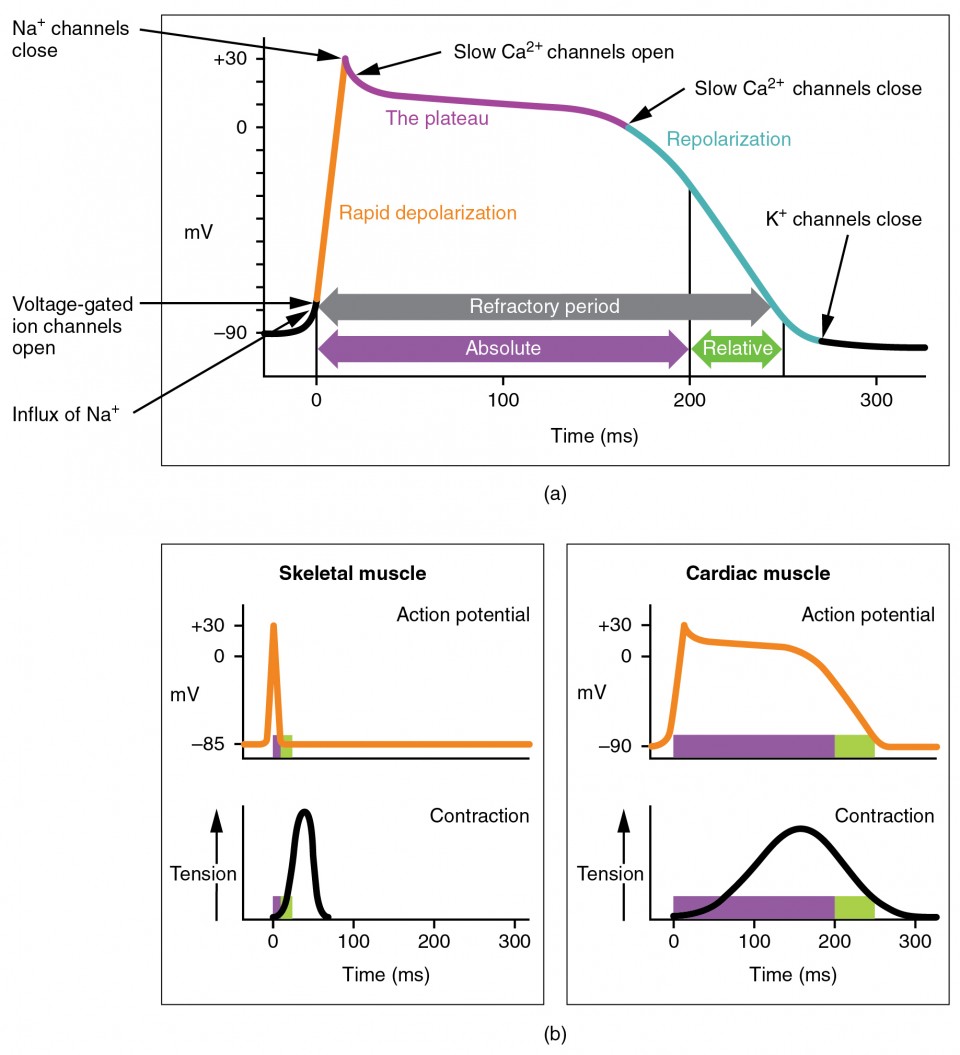Makindo Medical Notes"One small step for man, one large step for Makindo" |
|
|---|---|
| Download all this content in the Apps now Android App and Apple iPhone/Pad App | |
| MEDICAL DISCLAIMER: The contents are under continuing development and improvements and despite all efforts may contain errors of omission or fact. This is not to be used for the assessment, diagnosis, or management of patients. It should not be regarded as medical advice by healthcare workers or laypeople. It is for educational purposes only. Please adhere to your local protocols. Use the BNF for drug information. If you are unwell please seek urgent healthcare advice. If you do not accept this then please do not use the website. Makindo Ltd. |
Overview of Cardiac Electrophysiology
-
| About | Anaesthetics and Critical Care | Anatomy | Biochemistry | Cardiology | Clinical Cases | CompSci | Crib | Dermatology | Differentials | Drugs | ENT | Electrocardiogram | Embryology | Emergency Medicine | Endocrinology | Ethics | Foundation Doctors | Gastroenterology | General Information | General Practice | Genetics | Geriatric Medicine | Guidelines | Haematology | Hepatology | Immunology | Infectious Diseases | Infographic | Investigations | Lists | Microbiology | Miscellaneous | Nephrology | Neuroanatomy | Neurology | Nutrition | OSCE | Obstetrics Gynaecology | Oncology | Ophthalmology | Oral Medicine and Dentistry | Paediatrics | Palliative | Pathology | Pharmacology | Physiology | Procedures | Psychiatry | Radiology | Respiratory | Resuscitation | Rheumatology | Statistics and Research | Stroke | Surgery | Toxicology | Trauma and Orthopaedics | Twitter | Urology
⚡ The resting membrane potential is the electrical potential difference across the cell membrane when a cell is in a non-excited state. It is essential for the function of excitable cells such as neurons, skeletal muscle, and cardiac tissue.
🔑 Key Concepts
- Definition:
- Voltage difference between inside and outside of a cell at rest.
- Usually -60 to -90 mV (inside more negative).
- Ion Distribution:
- Inside: High K⁺, negatively charged proteins.
- Outside: High Na⁺, Cl⁻.
- Key Players:
- Ion channels → selective permeability to ions.
- Na⁺/K⁺ ATPase → 3 Na⁺ pumped out, 2 K⁺ pumped in per ATP hydrolysed.
| Ion | Inside Cell | Outside Cell |
|---|---|---|
| Na⁺ | 10–15 | 145 |
| K⁺ | 140 | 4 |
| Cl⁻ | 4–20 | 110 |
| Ca²⁺ | ~0.0001 | 1.8 |

⚙️ Mechanisms Establishing Resting Potential
- Diffusion of Ions:
- K⁺ leaks out → leaves inside more negative.
- Na⁺ leaks in slowly (membrane less permeable to Na⁺).
- Electrochemical Gradient:
- K⁺ efflux balanced by electrical pull back in → equilibrium.
- Sodium-Potassium Pump:
- Maintains gradients → pumps Na⁺ out, K⁺ in.
- Contributes to negativity of membrane potential.
📐 Equations
- Nernst Equation: Calculates equilibrium potential for a single ion:
E_ion = (RT/zF) * ln([ion]_outside / [ion]_inside) - Goldman–Hodgkin–Katz (GHK): Combines permeabilities of K⁺, Na⁺, Cl⁻ to predict overall membrane potential:
V_m = (RT/F) * ln((P_K[K⁺]_out + P_Na[Na⁺]_out + P_Cl[Cl⁻]_in) / (P_K[K⁺]_in + P_Na[Na⁺]_in + P_Cl[Cl⁻]_out))
🏥 Clinical Relevance
- Hyperkalaemia: ↑ K⁺ outside → resting potential less negative → cells more excitable.
⚠️ Symptoms: muscle weakness, arrhythmias, cardiac arrest. - Hypokalaemia: ↓ K⁺ outside → resting potential more negative → harder to excite.
⚠️ Symptoms: cramps, weakness, arrhythmias. - Drugs & Channelopathies: Alter excitability by modifying ion flux.
💊 How Drugs Affect Resting Membrane Potential
- 🔵 Sodium Channel Blockers: ↓ excitability by blocking Na⁺ influx.
Examples: Lidocaine (local anaesthetic), Quinidine (antiarrhythmic). - 🟢 Potassium Channel Blockers: Prolong repolarisation, keep cells depolarised longer.
Examples: Amiodarone, Sotalol. - 🟡 Calcium Channel Blockers: ↓ Ca²⁺ entry, ↓ contraction & excitability.
Examples: Verapamil, Diltiazem, Amlodipine. - 🔴 Na⁺/K⁺ ATPase Inhibitors: Disrupt gradients, depolarise cells.
Example: Digoxin → ↑ intracellular Ca²⁺, stronger heart contraction. - 🟣 Ion Channel Modulators: Indirectly alter excitability.
Example: Benzodiazepines → enhance GABA → Cl⁻ influx → hyperpolarisation.
📌 Clinical Implications
Altering resting potential changes excitability of neurons, cardiac fibres, and muscle cells. This underpins treatment of arrhythmias, epilepsy, hypertension, pain, and anaesthesia.
📝 Summary
Resting potential (~ -70 mV) results from K⁺ leak, Na⁺/K⁺ pump, and ion gradients. 👉 Hyperkalaemia → excitable, hypokalaemia → less excitable. 👉 Many drugs act by modifying ion flux across membranes. Understanding these mechanisms links cell physiology directly to clinical pharmacology.